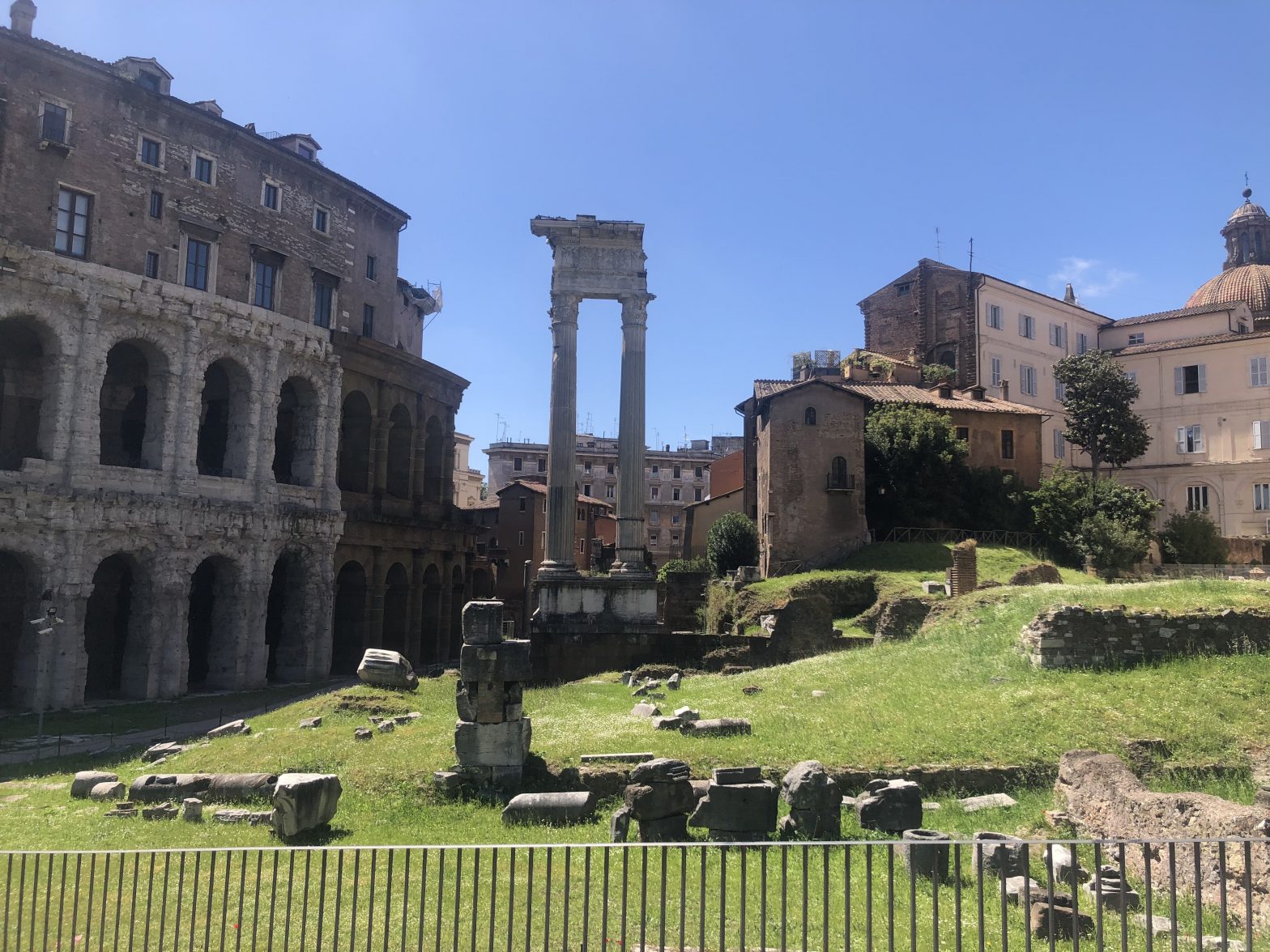What is UNESCO World Heritage? Who decides if a site has Outstanding Universal Value? What are the criteria for becoming a UNESCO Site? The cultural and natural heritage is unique and irreplaceable, which is why it must be protected and protected at an international level. An effective system of collective protection, organized on a permanent basis and according to modern scientific methods, supports countries in safeguarding assets in the conservation of nature.
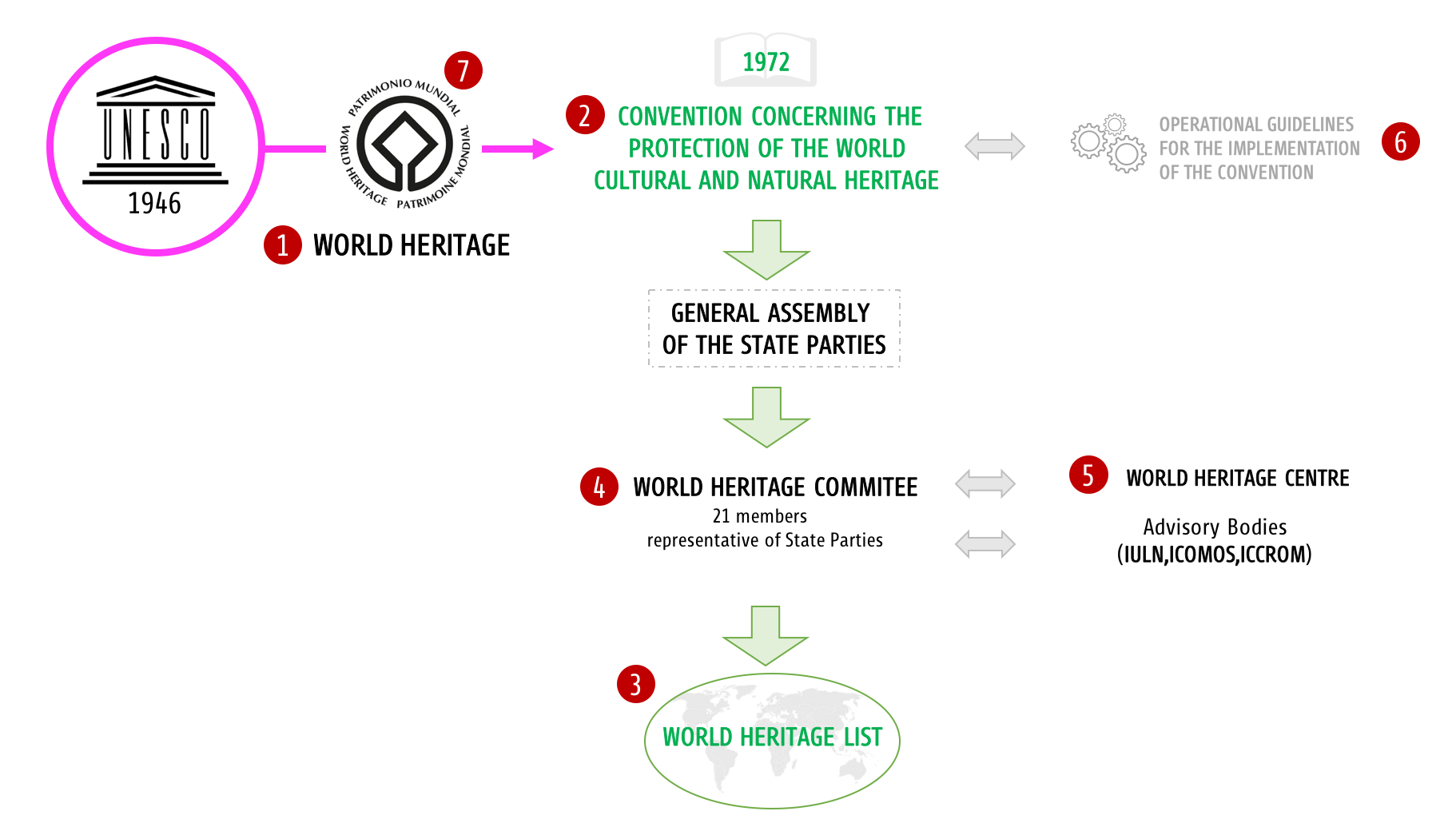
Protecting World’s cultural and Natural Heritage is a mission that has its origin in the awareness of the international community of the need to preserve certain tangible cultural representations of people or nations, elevating them to the rank of a common heritage of humanity.
What makes the concept of World Heritage exceptional is its Universal application. The World Heritage Sites belong to all the peoples of the world, without distinction. That’s why it is necessary to identify common and shared policies that allow countries to support each other.
The idea of creating a legal instrument that would identify the most significant examples of cultural heritage was already felt before the Second World War within the League of Nations, but it is only with the birth of the United Nations and with the establishment of UNESCO that this idea finds concreteness.
Without the support of other countries, some cultural and natural sites of outstanding value could deteriorate or disappear, often for lack of funds to preserve them. From this need arises the Convention Concerning the Protection of the World Cultural and Natural Heritage, an agreement ratified by almost all the countries of the world, which aims to guarantee the intellectual and financial resources necessary to protect the sites.
The birth of UNESCO
The end of the war seemed distant and CAME aimed to find effective methodologies in order to promote peace and rebuild the education system. Hence the idea of creating an organization within the United Nations for Cultural Education and Reconstruction. This decision had a profound echo in public opinion which soon materialized in the establishment of UNESCO.
The United Nation Educational Scientific and Cultural Organization was enstablished in Paris on November the 4th, 1946.
The Constitution was ratified by 20 of the 37 countries present. The signatories were: Saudi Arabia, Australia, Brazil, Canada, China, Czechoslovakia, Denmark, Egypt, France, Greece, India, Lebanon, Mexico, New Zealand, Norway, United Kingdom, Dominican Republic, United States of America, South Africa and Turkey. The purpose of UNESCO is stated in the first article of its Constitution.
Article I – Purposes and functions
1. The purpose of the Organization is to contribute to peace and security by promoting collaboration among the nations through education, science and culture in order to further universal respect for justice, for the rule of law and for the human rights and fundamental freedoms which are affirmed for the peoples of the world, without distinction of race, sex, language or religion, by the Charter of the United Nations.
The Italian Government joined the Organization in 1947, during the General Conference of Mexico City. The official ratification of the Constitution was on January 27, 1948. This historic moment led in 1950 to the establishment of the Italian National Commission for UNESCO (CNI UNESCO) which aims to promote the promotion, connenctions, information, consultation and implementation of UNESCO programmes in Italy.
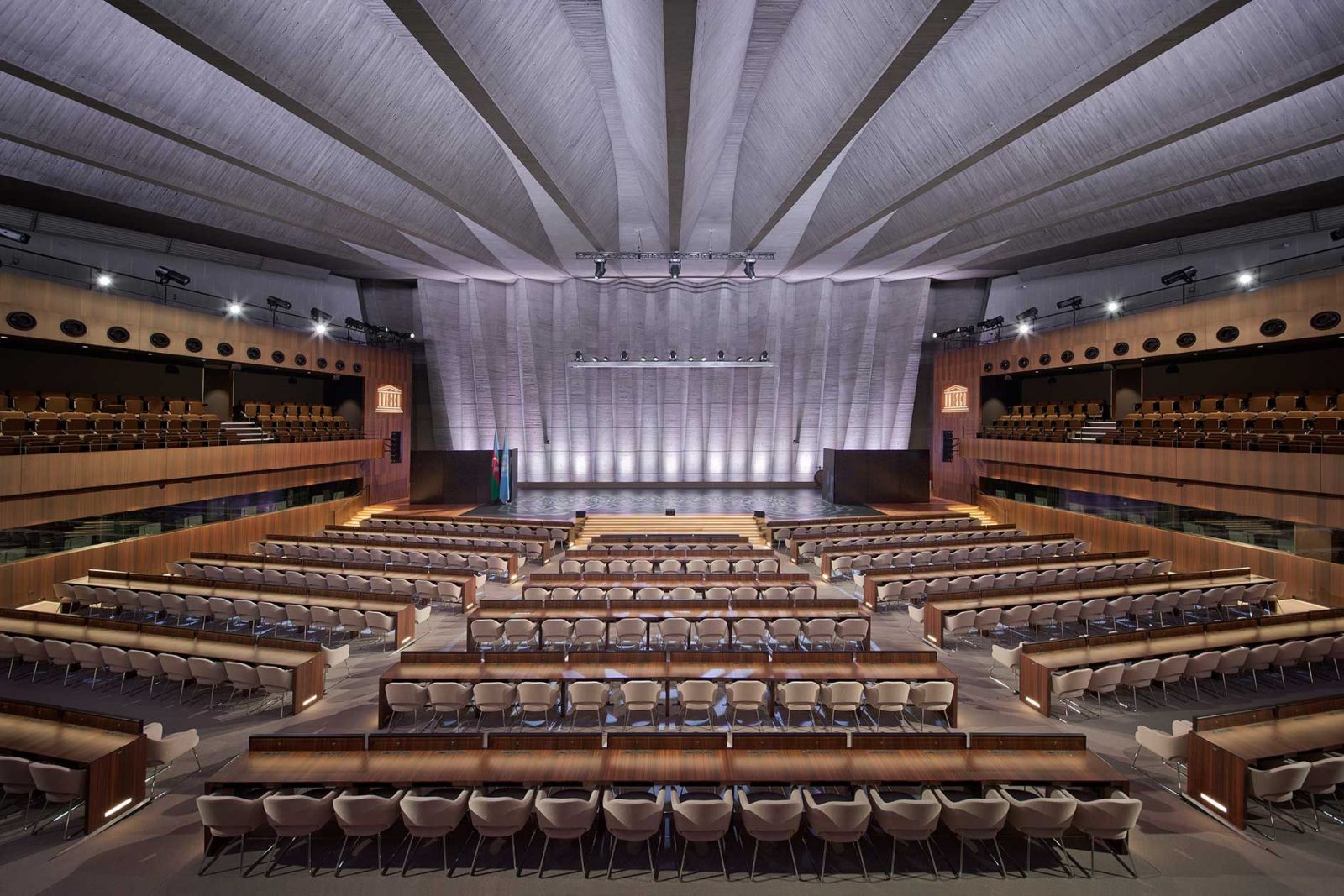
In 1972, during the UNESCO General Conference, the text of the Convention concerning the protection of the world cultural and natural heritage was adopted. The document has an extraordinary legal and historical value since it conceived, in an absolutely innovative way, the protection of the world heritage as a balance of natural and cultural elements, identifying at the same time precise obligations and responsibilities of States Parties regarding identification, enhancement and effective protection of the assets protected by the Convention.
Over the years, the Convention has been ratified by 194 states. By their adhesion, States Parties agree to identify and designate properties on their national territory to be inscribed on the World Heritage List. When a state appoints a property it provides details on the characteristics and management of the property for its preservation and is committed to protecting the world heritage values and reporting periodically on their conditions.
The process leading to Convention
The main steps towards the Convention:
1959 – UNESCO launches a campaign to safeguard the temples of Abu Simbel, in the Nile valley that risk being submerged following the construction of the Aswan dam in Egypt.Before the archaeological areas were flooded, UNESCO managed to conduct adequate archaeological research, to disassemble, transport and reassemble the temples in a safe area.
A first draft of the Convention was prepared on this occasion.
1962 – With the Recommendation concerning the Safeguarding of Beauty and Character of Landscapes and Sites and characteristics of landscapes and places, UNESCO promotes the protection and, where possible, the restoration of the aspect of natural, rural and urban landscape and sites, whether natural or man-made, which a cultural or aesthetic interest or form typical natural surroundings.
1965 – The International White House Conference calls for the creation of a “World Heritage Fund” to protect natural sites, landscapes and historic sites.
1966 – International Safeguarding Campaign of the City of Venice following the catastrophic flooding.
1968 – The International Union for Conservation of Nature (IUCN) draws up a proposal for a World Heritage Fund for Nature.
1972 – Following a United Nations Conference on the Human Environment and the work of the expert groups of UICN, ICOMOS and UNESCO, all proposals are brought together in the Convention concerning the Protection of Cultural and Natural Heritage.
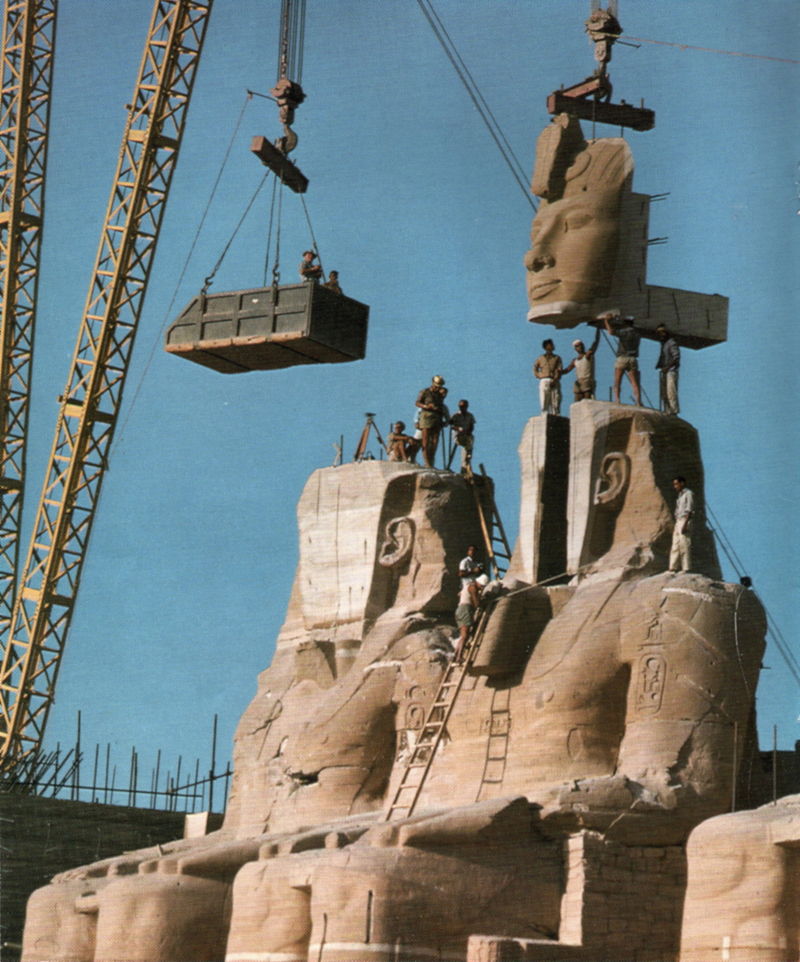
The World Heritage List is a directory of all cultural or natural (or both) Sites recognized by UNESCO for their Outstanding Universal Value.
The Properties inscribed to the List are 1154, consisting of 897 Cultural Sites, 218 Natural Sites and 39 Mixed Sites (cultural and natural together). Within these Properties there are 41 Transboundary, those sites that fall under the jurisdiction of several states (such as the historic center of Rome) and 52 sites in danger. Two sites were delisted (Shrine of the Arabian Oryx of Arabia – Saudi Arabia, Elbe Valley of Dresden – Germany, Maritime Mercantile City of Liverpool – Great Britain) following the verification by the World Heritage Committee of the loss of some elements that characterized the Outstanding Universal Value.
All State Parties which have adhered to the World Heritage Convention are part of the General Assembly. The Assembly meets every two years during the sessions of the General Conference of UNESCO. Each country has one vote regardless of the size and extent of its contribution to the World Heritage Fund. The General Assembly elects the members of the World Heritage Committee and determines the amount of contributions to be paid by the States Parties to the World Heritage Fund.
The World Heritage Committee is composed of 21 representatives of the States Parties. It meets once a year in an ordinary session. At the request of at least two thirds of the States, the Committee may also meet in extraordinary session.
Functions of the Committee.
- Responsible for the implementation of the World Heritage Convention.
- Defines the use of the World Heritage Fund.
- Grants financial assistance at the request of the States Parties.
- Decides on the inclusion of a property in the List.
- Examines the reports on the state of conservation of the properties and asks for action if the properties are not properly managed.
- Decides on the deletion of properties.
The Committee has the final say on the registration of a property in the List, but is supported in advance in the Deliberations by the Advisory Bodies, three international organizations appointed by the Convention as consultants: International Union for Conservation of Nature (IUCN); The International Council on Monuments and Sites (ICOMOS); The International Center for the Study of the Preservation and Restoration of Cultural Property (ICCROM).
The World Heritage Centre is defined as a focal point and coordinator with UNESCO of World Heritage issues. Founded in 1992 on the occasion of the twenty-year celebrations of the Convention, in addition to organising the annual session of the Committee and supporting States Parties in the preparation of applications, the Centre organises technical seminars and workshops, takes care of the communication and training of the young generation to increase awareness of the importance of preserving the heritage.
The Conservation Process
2. The State Party draw up a list of the sites it considers to be of Exceptional Universal Value.
3. The State Party shall select the sites it wishes to propose for inclusion in the list (tentative list).
4. The complete application form shall be sent to the UNESCO World Heritage Centre.
5. The World Heritage Centre verify that the documentation is complete and send it to the Advisory Bodies (ICOMOS and ICCROM and/or IUCN) for evaluation.
6. Experts visit the sites to assess their degree of protection and management
7. The Advisory Bodies evaluate proposals for registration on the basis of cultural and natural heritage criteria and draw up an evaluation report
8. The final decision shall be taken by the 21 members of the World Heritage Commission who may accept or reject the registration or postpone it by requesting further specifications.
(from World Heritage to Youth, UNESCO 2002)
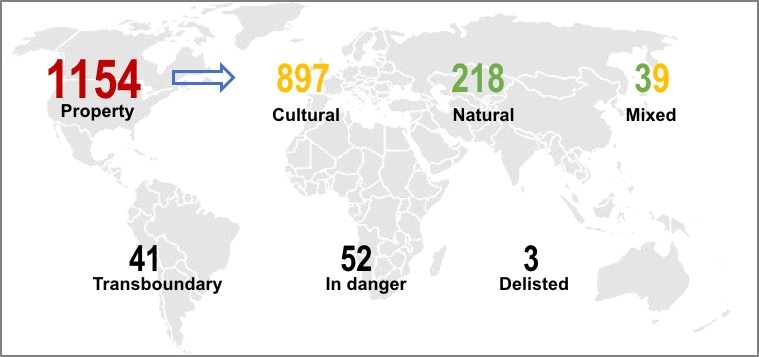
The rules for giving concrete application to the Convention can be found in the Operational Guidelines for the implementation of the Convention.
The Guidelines provide the interpretative tools of cultural and natural property mentioned by the Convention and listed the modalities for their registration. The Guidelines contain the selection Criteria of cultural and natural heritage, the application procedures and the registration to the List and the different procedures to be carried out to submit the documentation relating to the management and monitoring of the Sites already registered.
The Criteria
(i) to represent a masterpiece of human creative genius;
(ii) to exhibit an important interchange of human values, over a span of time or within a cultural area of the world, on developments in architecture or technology, monumental arts, town-planning or landscape design;
(iii) to bear a unique or at least exceptional testimony to a cultural tradition or to a civilization which is living or which has disappeared;
(iv) to be an outstanding example of a type of building, architectural or technological ensemble or landscape which illustrates (a) significant stage(s) in human history;
(v) to be an outstanding example of a traditional human settlement, land-use, or sea-use which is representative of a culture (or cultures), or human interaction with the environment especially when it has become vulnerable under the impact of irreversible change;
(vi) o be directly or tangibly associated with events or living traditions, with ideas, or with beliefs, with artistic and literary works of outstanding universal significance. (The Committee considers that this criterion should preferably be used in conjunction with other criteria);
(vii) to contain superlative natural phenomena or areas of exceptional natural beauty and aesthetic importance;
(viii) to be outstanding examples representing major stages of earth’s history, including the record of life, significant on-going geological processes in the development of landforms, or significant geomorphic or physiographic features;
(ix) to be outstanding examples representing significant on-going ecological and biological processes in the evolution and development of terrestrial, fresh water, coastal and marine ecosystems and communities of plants and animals;
(x) to contain the most important and significant natural habitats for in-situ conservation of biological diversity, including those containing threatened species of outstanding universal value from the point of view of science or conservation.
In the managment process of the World Heritage properties, account must also be taken of the UNESCO rules and general principles which apply, as well as in the Conventions and Declarations, also in the Recommendations and other instruments concerning international cooperation.
The World Heritage Policy Compendium is a database that collects policies to be applied for the management, conservation and protection of the properties, organized in 5 strategic objectives: Credibility, Conservation, Capacity Building, Communication and Communities.
The World Heritage emblem was designed by artist Michel Olyff and was officially adopted in 1978.
The central square symbolizes the results due to humanity’s abilities, the circle celebrates the gift of nature. The emblem is as round as the world, symbol of the protection of the heritage for all Humanity.
The World Heritage Logo consists of the UNESCO emblem (Doric temple) and the Olyff circle, separated by a vertical dot.
The use of the world logo is only granted with the Committee’s approval and is subject to a set of guidelines for use.
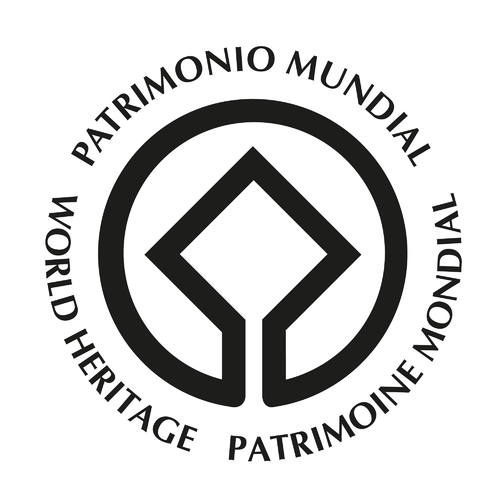
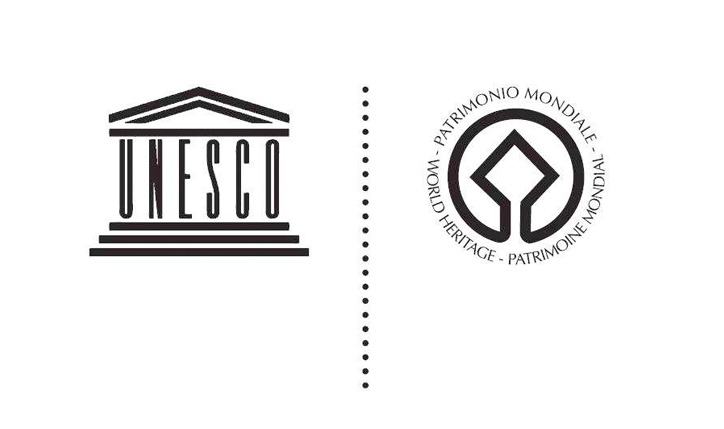
Bibliography and Webgraphy
- Associazione Beni Italiani Patrimonio Mondiale https://www.patrimoniomondiale.it
- BARONCINI, E. (a cura di), Il diritto internazionale e la protezione del patrimonio mondiale, Dipartimento di Scienze giuridiche dell’Università di Bologna, 2019
- World Heritage Centre web site: https://whc.unesco.org
- Intangible Cultural Heritage web site: https://ich.unesco.org/en
- Portale Ufficiale della Commissione Nazionale Italiana per l’Unesco: https://www.unesco.it
- Portale dell’archivio digitale UNESCO https://atom.archives.unesco.org/
- UNESCO 2002, Il patrimonio Mondiale ai giovani, I libri dell’UNESCO, Armando, Roma 2002
- UNESCO, ICOMOS, ICCROM, IUCN, Managing Cultural World Heritage, 2013, UNESCO WHC

